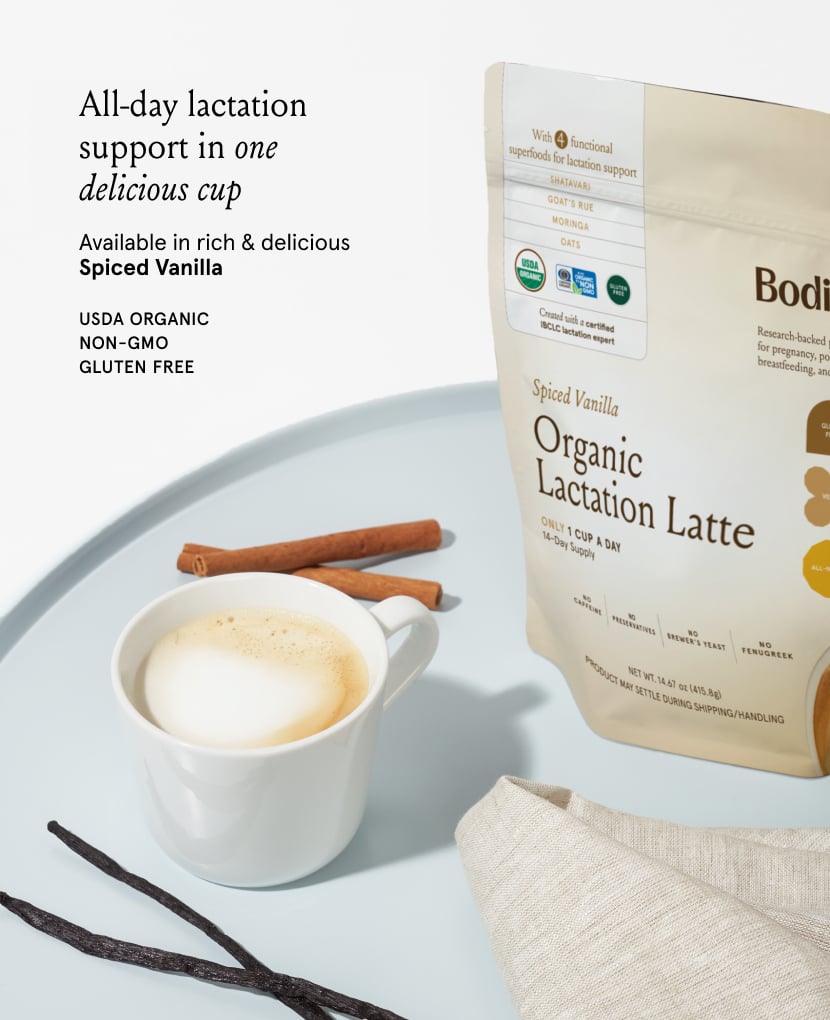Bodily does not provide medical advice, diagnosis, or treatment. The resources on our website are provided for informational purposes only. You should always consult with a healthcare professional regarding any medical diagnoses or treatment options.
What is it?
Milk “coming in” essentially describes the feeling of increased breast fullness as milk production begins in the days following birth. This increased fullness, which in some cases leads to engorgement, occurs as the breasts transition from containing colostrum (produced during pregnancy) to breast milk.
Colostrum 101
Colostrum production begins during pregnancy — usually at around 12-18 weeks. Some people may notice clear or yellow fluid leaking from their nipples during this time, though many do not.
If you breastfeed, the baby will get colostrum for the first few days after birth. A sticky yellow fluid high in fat, protein, salt and vitamins, colostrum provides a newborn with easily digestible nutrition and immune support. Typical colostrum production is 1-4 teaspoons per day, which prepares the baby’s growing stomach (which is only about the size of a marble at birth!) for breast milk.
Transitional breast milk
When early breast milk comes in, it is a transitional mix of colostrum and breast milk until fluid production increases dramatically, and breasts start to get fuller and feel firmer. Compared to colostrum, breast milk is more watery and can range in color from blue-ish to white to yellow. Initial breast milk production is triggered by a variety of factors, including the delivery of the placenta which enables the production of prolactin, the hormone responsible for milk production, and early skin-to-skin contact after birth. The transition from colostrum to breast milk typically takes place over the course of the first two weeks after birth.
Engorgement
Engorgement is exceedingly common when milk initially comes in. It usually lasts for a few days and can cause significant discomfort and pain. While there isn’t anything you can do to prevent engorgement, certain things can help manage it.
Is there anything I can do to affect when my milk comes in?
Ultimately, hormones dictate milk production, but frequent breastfeeding or pumping (at least 10-12 feeds per day) in the first few days after birth can help with production. Studies also show that early skin-to-skin contact, immediately after birth and frequently in the first few days, is linked to higher rates of breastfeeding for longer durations, suggesting that this period is physiologically important to establishing milk supply.
A note about breastfeeding after a cesarean birth
Having a cesarean birth can delay the onset of milk for many reasons —use of anesthesia and pain medication, less skin-to-skin contact (or a lack of it), stress and trauma, just to name a few. The general advice is to breastfeed as soon as possible and do it often, or to pump if it’s not possible to breastfeed.
A note about preemies
Babies born prematurely can still breastfeed, though milk production might be delayed. Skin-to-skin contact and breastfeeding may be difficult with preemies during the colostrum phase for a variety of reasons, so doctors generally advise pumping frequently. This way, the body knows there’s a demand for breast milk, which will help stimulate production.
When should I be worried?
If after three days your breasts don’t feel full, you should seek help from a lactation consultant. While many people assume breastfeeding should be intuitive and easy, the process is actually complicated, challenging and uncomfortable for many. Getting professional support, especially in the first few days postpartum, can be key to avoiding frustration and increasing chances for breastfeeding success.







